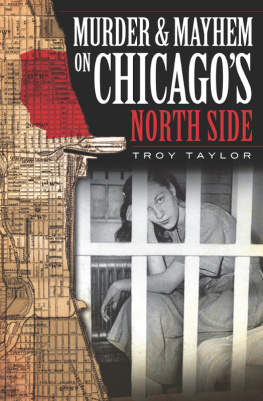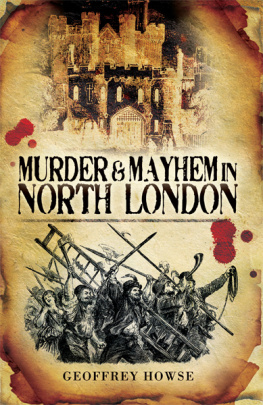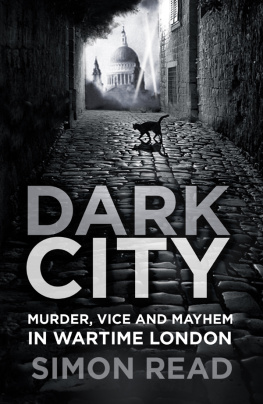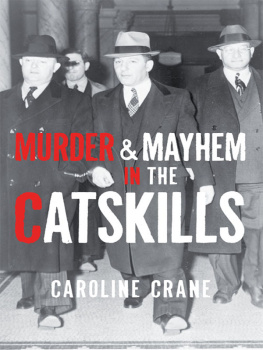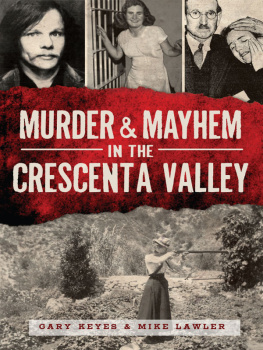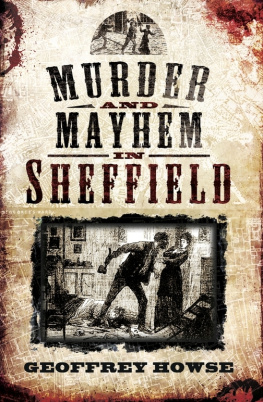
Published by The History Press
Charleston, SC 29403
www.historypress.net
Copyright 2013 by Diane Ham and Lynne Menz
All rights reserved
First published 2013
e-book edition 2013
Manufactured in the United States
ISBN 978.1.62584.596.2
Library of Congress Cataloging-in-Publication Data
Ham, Diane C.
Murder and mayhem in Mendon and Honeoye Falls : Murderville in Victorian New York / Diane Ham and Lynne Menz.
pages cm
Includes bibliographical references.
print edition ISBN 978-1-62619-141-9 (paperback)
1. Crime--New York (State)--Mendon (Town)--History. 2. Murder--New York (State)--Mendon (Town)--History. 3. Crime--New York (State)--Honeoye Falls--History. 4. Murder--New York (State)--Honeoye Falls--History. 5. Mendon (N.Y. : Town)--History. 6. Honeoye Falls (N.Y.)--History. 7. Mendon (N.Y. : Town)--Social conditions. 8. Honeoye Falls (N.Y.)--Social conditions. 9. Mendon (N.Y. : Town)--Biography. 10. Honeoye Falls (N.Y.)--Biography. I. Menz, Lynne. II. Title.
HV6795.M43H25 2013
364.15230974788--dc23
2013029706
Notice: The information in this book is true and complete to the best of our knowledge. It is offered without guarantee on the part of the authors or The History Press. The authors and The History Press disclaim all liability in connection with the use of this book.
All rights reserved. No part of this book may be reproduced or transmitted in any form whatsoever without prior written permission from the publisher except in the case of brief quotations embodied in critical articles and reviews.
Contents
Acknowledgements
No book ever writes itself. Without help from numerous individuals, this book would not have been possible. First and foremost, we thank Johanna OBrien for planting the seed that grew into this book. We also thank Paul Worboys, Stan Worboys, Helen Stefano and Mike Roberts, who helped us as we gathered all the information. We thank Harry DeHollander and Emily Mansler, both retired from the Monroe County Sheriffs Office, for their help in police matters. Special thanks go to our husbands, Rodney Ham, not only for his invaluable work on all our photos, and Wayne Menz, not only for his tech support every time the computer had a mind of its own, but also for their patience and understanding. Lastly, we thank Whitney Landis and everyone at The History Press for making this possible.
Introduction
The Town of Mendon in upstate New York might be described as a quiet, somewhat well-to-do, semi-agricultural area. Today, the Village of Honeoye Falls within the town is what might be called a bedroom community. It is a quiet little village where many people even today lock their doors only at night. That was not always the case.
An 1872 map of Honeoye Falls. From the Atlas of Monroe Co., NY, 1872.
In years past, the village was the center of commerce for the town, with prosperous mills, manufacturing, retail shops and two railroad linesthe New York Central and the Lehigh Valleythat connected it to the rest of the United States and the world. In the mid-1800s, this quiet little village was anything but quiet. Horse stealing was commonplace, with white horses turning black overnight. Saloons and taverns were numerous. Street fights and barroom brawls were common, especially on Saturday nights after the immigrant workers on the railroads and water conduit were paid. Drunks were confined to the village jail, known as the lockup, which was located in the village hall. It was at this time that the quiet Village of Honeoye Falls earned the name Murderville.
It was this nickname of Murderville that sparked our interest. It was briefly mentioned by former historians of the village and longtime residents. One such resident, Paul Worboys, even constructed a time line of events that were related to the ominous moniker, but few particulars were ever givenuntil now. We have waded through census records, old newspapers and various other sources, and little by little we have filled in the particulars. It was hard to believe that these murders actually took place in our own backyards.
We hope you find these events as interesting as we did.
Honeoye Falls Good Name Tainted
William Barrows and Edward Lake, August 11, 1849
After the years following the Revolutionary War, the building of the Erie Canal and the coming of railroads to West Mendon (now Honeoye Falls) and the Town of Mendon, New York, social and economic attitudes began to change. Many Europeans who had settled in the New England states, eastern New York, Pennsylvania and New Jersey were being crowded out and desired to own more land. Many of them came to western New York, including to the Town of Mendon and the Village of Honeoye Falls. Many folks purchased land, and others roamed around, filling their days with opportunity or more undesirable activities.
One young Honeoye Falls lad of fourteen was the first to have his name written in the Admittance Book at the Western House of Refuge, which was opened for delinquents in 1849 in Rochester, New York. According to a Rochester newspaper of August 11, 1849, William Barrows was committed for burglarizing a house and for associating with idle and vicious boys. The records of the Western House of Refuge indicated that William Barrows was pretty and intelligent but seemed to have been considerable of a rogue. Thirty-eight boys were admitted that first year.
William Barrows was born in the Town of Rush, Monroe County, to American parents who had moved to West Mendon. His parents were temperate. His father, Jarvis Barrows, was a tailor and owned his house and lot in Mendon.
William had attended school pretty regularly until the previous two years. The summer before he was admitted to the House, William worked on a farm. He said that for the past three years he had been in the habit of associating with idle and vicious boys and frequently committed theft. Once he broke into a grocery store. The offense for which he was sent to the institution was breaking into a private home in company with Edward Lake and stealing eighteen dollars. This had occurred the previous winter, at which time the boys were arrested and admitted to bail from time to time until they were sent to the House of Refuge. In April 1852, William Barrows was discharged to the care of his father, who was planning to move to the West in an attempt to save his recreant son.
Western House of Refuge, Rochester, New York, built in 1849. Reprint courtesy of Rochester Historical Society.
Edward Lake, age thirteen, was also committed to the Western House of Refuge on August 11, 1849. He was born to American parents in Monroe County. His father, Robert A. Lake, was a farmer and lived in West Mendon as well. He had recently sold his farm and was planning to move to Wisconsin. Edward always lived at home, went to school and worked on the farm.
When he was admitted, Edward said he had never associated with bad boys or committed any criminal offenses until the previous fall, when he fell in company with William Barrows, with whom he committed two or three petty offenses and finally broke into a private home when the family was absent, stole eighteen dollars and was soon after arrested. He was also admitted to bail until the next term of the court, when they were both sent to the House. He read fairly well but often referred to himself as stupid. He did not appear to be vicious.





